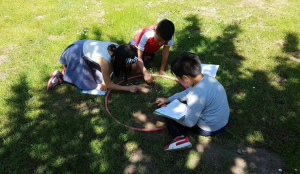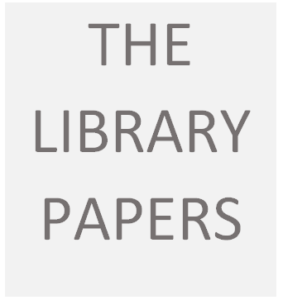Inquiry Based/Self Directed Learning
 This is a science unit I collaborated on in various versions with three different classes ranging from Grades 1 to 3. The idea was to get the students, working independently or in small groups, to start making connections between information they learn from books and what they experience in the real world, with the aim of helping them to understand research as a recurring cycle of activities–talking and asking questions, reading and doing research, looking at the actual world, and communicating what they’ve learned.
This is a science unit I collaborated on in various versions with three different classes ranging from Grades 1 to 3. The idea was to get the students, working independently or in small groups, to start making connections between information they learn from books and what they experience in the real world, with the aim of helping them to understand research as a recurring cycle of activities–talking and asking questions, reading and doing research, looking at the actual world, and communicating what they’ve learned.
The project was about investigating five types of bugs—spiders, ants, beetles, wood bugs and centipedes— and learning about their roles in local ecosystems.
and learning about their roles in local ecosystems.
Below are several slides describing the research process as we used it: Talking, Reading, Looking, and Writing. There is also information about the different levels of support provided in inquiry based projects, and about the roles of the classroom teacher and the teacher-librarian.
The embedded hotspots on each image provide more information on relevant points. Just hover and click to read more. If you click on the ‘Full Screen’ icon in the right corner of each image, use the ‘Escape’ button to exit full screen mode and return to the post. And when you’re done reading the post, click the ‘Back’ button on your browser to return to the blog Mainpage.
Talking
Talking is one of the most important parts of any learning project. As they proceed with their inquiries, students practice many different ways of talking. Just a few examples taken from this project: the Know-Wonder-Learn brainstorming activity in the chart below, discussions with their partners and table groups, and oral presentations of their findings.
Reading
Just as we talk in a variety of ways to suit a variety of reasons, we also read for a variety of purposes: for entertainment, to learn something, maybe to learn how to do something. And we start to see that written texts are presented differently depending on their purposes. When looking through these books, students were encouraged to see how they could get information from the printed text, but also from the diagrams and pictures.
A conversation with a student:
Student: Spiders are gross. I don’t like them. I don’t want to know this.
Me: Maybe that’s how little kids talk about spiders. Do you think that’s how researchers would talk about them, though?
Student: But I AM a little kid.
Me: Well couldn’t you be both? A little kid AND a researcher?
Looking
Critical thinking begins when students compare what they see in the world around them with what they read in books. Going out in the field to do research is one way to start this process. Even very young students can do this. When students have a clear understanding of what they are supposed to be doing and how they should go about doing it, they are focused and engaged.
Writing
Throughout this project, students switched between the various kinds of writing they needed to do: making research notes, recording field observations, and writing up their findings in paragraph form. In this first iteration of the research process, we didn’t point this out; we just gave them instructions on how to record the different kinds of information. In the second iteration, we would make these different formats an instructional focus.
Learning to Inquire
In the same way that they need to build stamina as independent readers, students need to build up their stamina for engaging in independent inquiry-based learning. As they do this, the amount of support they need varies. Ideally, they get the level of support they need at each of the stages.
What can a Teacher-Librarian do for you?
Literacy has always been at the heart of a Teacher Librarian’s work. Not so much basic literacy (accuracy, fluency), and not so much remedial literacy, but what could be called ‘advanced’ literacy — the comprehension and production of increasingly complex texts.
In recent years, we have started promoting self-directed learning, because we have noticed that independent inquiry is a basic skill required for life-long learning, and for being able to independently access the wealth of resources available to support this.
And because literacy is so integral to digital media forms, we are concerned not just with print-based literacy, but multi-modal literacies. This includes print literacy, but also information literacy, critical literacy, and digital and media literacy as well. We are concerned not just with helping students read or ‘consume’ texts, but also helping them produce their own communication as part of their learning process.
Basically, any time literacies are involved, a librarian is interested. Below is an example of how we distributed the work on this project:
Curriculum Connections
Here are some of the relevant links to the new BC Ministry of Education curriculum which we used to structure this project:

